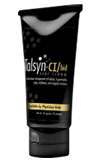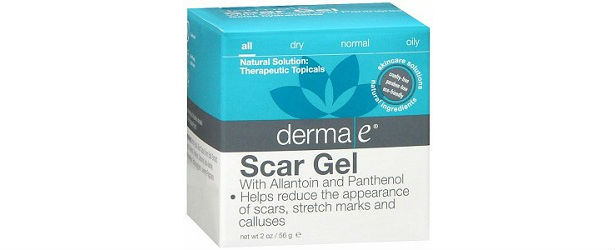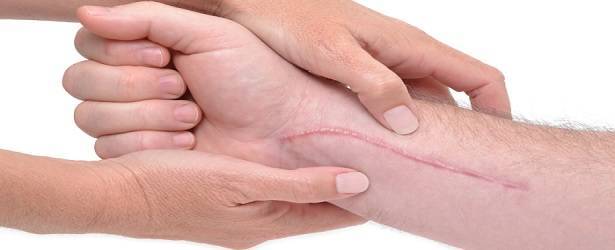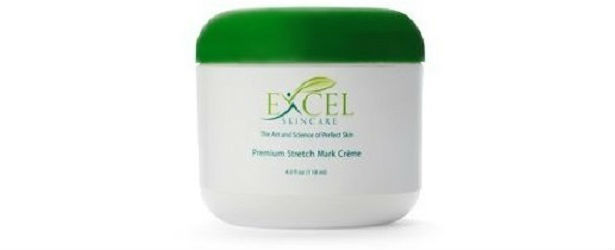
The Removal of Advanced Scars
Most scars can be treated and their appearance reduced with simple home treatments that include exfoliation, nourishment, and moisture. Some scars such as keloids and hypertrophic scars may need advanced scar removal. Keloid and hypertrophic scars happen when the body overproduces healing substances that cause excess tissue to form at the site of an injury. They can be treated with long-term home treatment, but certain situations may require a doctor’s care.
Preventing the Need for Advanced Scar Removal
If you are prone to severe scarring, the first way to prevent the need for advanced scar removal is to protect your skin from injury. Try to avoid excess piercings as they are a major culprit in developing keloid scarring. Keep your arms and legs covered when hiking or riding a bike. Use a good moisturizer and take care of any injuries right away.
As soon as you receive an injury to the skin, wash the area thoroughly to remove dirt and debris. Cover the area with a clean bandage or pressure dressing. Keep the area clean and dry until the wound is closed. You can even apply a dab of antibiotic cream, as these are known to help minimize scarring. After wound closure, begin using a silicone-based wound gel or bandage.
The best provide nourishment and moisture and keep healing skin protected. This minimizes scars from the beginning of the injury. Often, there are scar conditions that require further treatment, such as keloids or large wounds. Here are some advanced scar removal techniques that can be used as a last resort:
Cortisone Injections
Doctors can treat severe scars with cortisone injections. These help reduce inflammation, slow scar tissue formation, and lighten redness. They are effective but can have side effects. There may be pain at the site of injections, allergic reactions, or color changes in the skin tissue. They are usually given monthly for 3 months with an out-of-pocket cost of about $60 each, since insurance may not cover them if they are merely for cosmetic reasons.
Cryosurgery
Doctors can freeze scar tissue with cryosurgery to help flatten thickened or overgrown scar tissue. This type of treatment can help with very large scars. This treatment is said to be painful and can cause itching and irritated skin. There are also home cryosurgery kits that cost around $200.
Laser Treatment
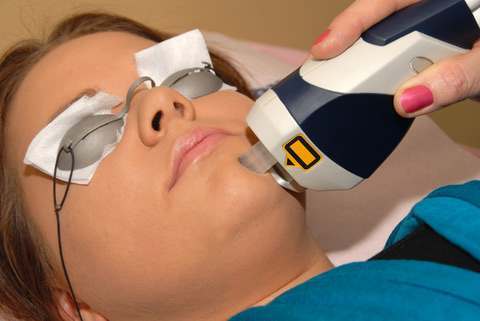 These treatments are between $1,000 and $5,000 and are very complicated. The doctor needs to find just the right laser that will be most effective on the scar tissue. After laser treatments, doctors will also bleach the skin to further lighten the scar. The one side effect of laser treatments is that keloid scarring may worsen or come back. This is due to burns to the skin caused by the laser further damaging the tissue.
These treatments are between $1,000 and $5,000 and are very complicated. The doctor needs to find just the right laser that will be most effective on the scar tissue. After laser treatments, doctors will also bleach the skin to further lighten the scar. The one side effect of laser treatments is that keloid scarring may worsen or come back. This is due to burns to the skin caused by the laser further damaging the tissue.
Surgical Removal
When scar tissue is very thick, large, and resistant to any other treatment, the last option is surgical removal of scar tissue. A surgeon can cut out the scar tissue and sew the skin back together to create only a line of scar tissue. This can cost between $500 and $3,000 depending on the size of the scar. Since this is surgery, there is a risk of infection and no guarantee that the treatment will be effective.
Taking care of injuries before they become out of control can help to prevent the need for advanced scar removal. This avoids damage to the skin and the increased costs of fading the scar in the long run.
TOP 5
SCARTreatments |
|||||
| Scarinex | Talsyn-CI | Kelo-cote | Revitol | H-Scars | |
|---|---|---|---|---|---|
| 1 | 2 | 3 | 4 | 5 | |
| Price (1 bottle) Price (4 bottles) Best Value |
$49.95 $139.70 |
$39.95 $239.70 |
$99.99 $599.94 |
$39.95 $239.70 |
$69.95 $419.70 |
| Overall Rating | 99.40% | 82.20% | 74.90% | 70.30% | 67.60% |
| Performance* |





|





|





|





|





|
| Speed of Results* | Extremely Fast | Good | Average | Slow | Slow |
| Quality of Ingredients | Premium | Good | Average | Average | Unknown |
| Customer Satisfaction Evaluation | 99% | 80% | 70.60% | 68% | 65% |
| Safety Evaluation | Safe for Use | Safe for Use | Safe for Use | Safe for Use | Safe for Use |
| Customer Service Rating |





|





|





|





|





|
| Reorder Rate | Highest | Good | Average | Average | Average |
| Return Policy | Risk Free | Risk Free | No Guarantee | Unopened Only | Risk Free |
| Success Rate | 99.20% | 81% | 72% | 69.30% | 66.10% |

 Subscribe Now
Subscribe Now
